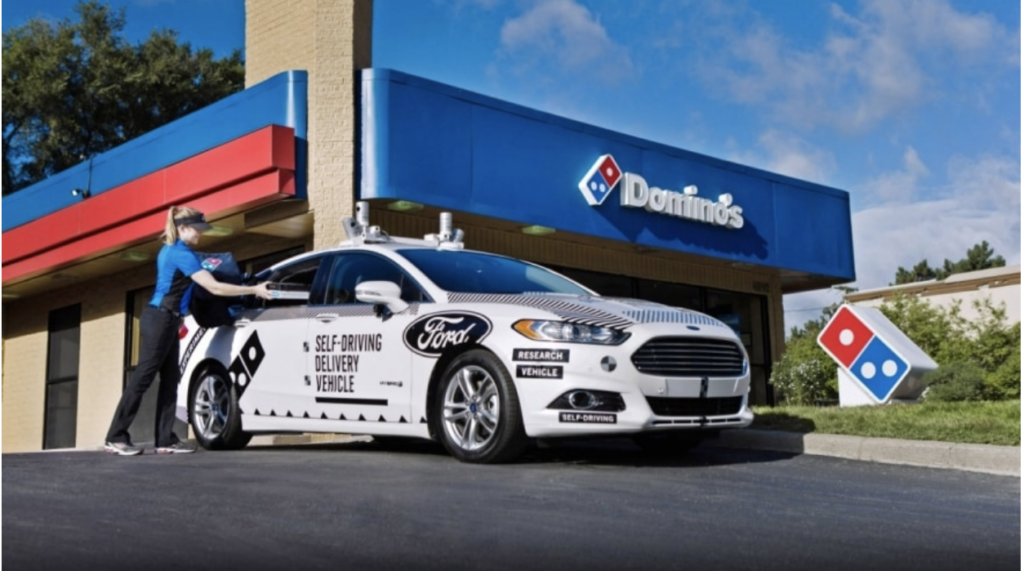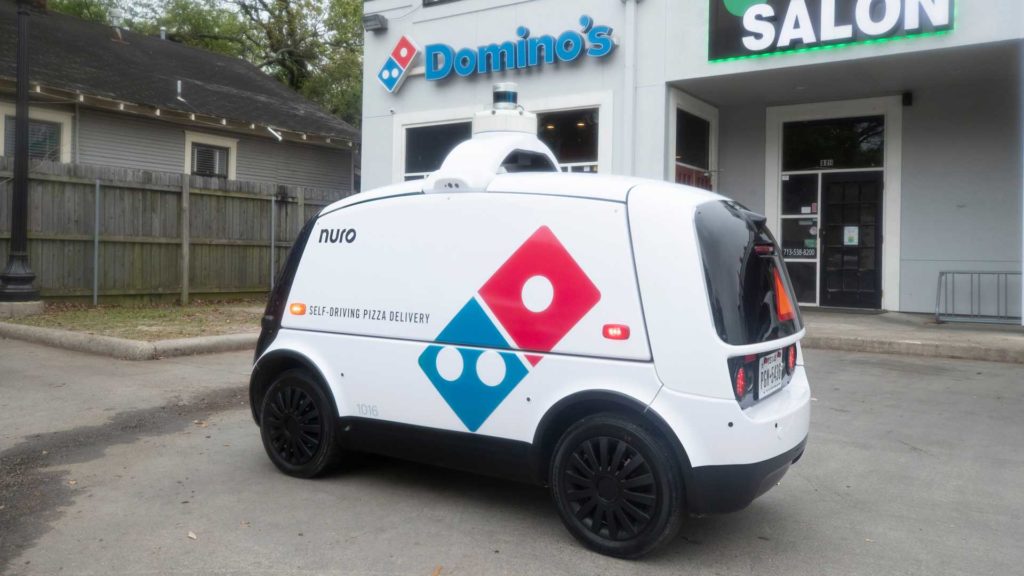
If you are paying attention to contactless service, then you may have noticed how many businesses are adapting to this new way of serving customers. More restaurants are signing up for delivery services like GrubHub and Uber Eats; grocery stores are investing heavily in curbside programs. Even Walmart has fast-tracked the launch of its unlimited delivery service, taking a direct shot at Amazon Prime. Many companies are using this pandemic as a burning platform to get contactless service options to customers, faster.
Some companies have been thinking about this new-age of service for years. Domino’s (formerly Domino’s Pizza) teamed up with Ford back in 2017 to develop a driverless/contactless delivery service, taking advantage of Ford’s new (at the time) autonomous driving capabilities.
Originally tested in Domino’s home town of Ann Arbor, Michigan for 6 weeks back in 2017, Ford used the Fusion autonomous research vehicle equipped with lidar, radar, and camera sensors. This testing period was specifically designed to see if customers could warm up to the idea of driverless delivery (no pun intended). Today, this high-tech option seems necessary and customers would be happy to accept driverless service.
In June of 2019, Domino’s teamed up with Nuro, a robotics company specializing in autonomous vehicles. Nuro was originally founded three years prior by a pair of Google veterans. Domino’s introduced the second variation of Nuro’s vehicle, named R2, to service the Houston area with driverless delivery. Fast forward one year (and a pandemic) later, and we now see Nuro operating driverless delivery all over Houston for Domino’s, Walmart, and Kroger (another Houston grocery store).

Whether you are like Domino’s or Ford and have been thinking about contactless service since 2017, or you have been pushed to adapt recently- it’s essential to find ways to maintain excellent customer interactions as you introduce new ways of providing service. We have helped a number of our clients adapt to contactless delivery models, with tools like IVR systems for order acceptance and availability notifications, or virtual platforms to host a conference. Contact us today to learn more about how you can better serve your customers with contactless best-practices.